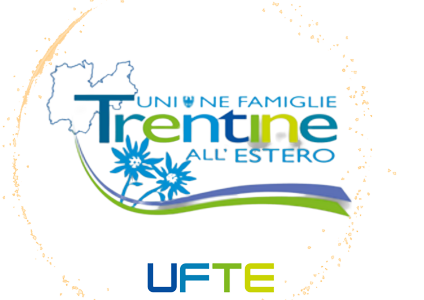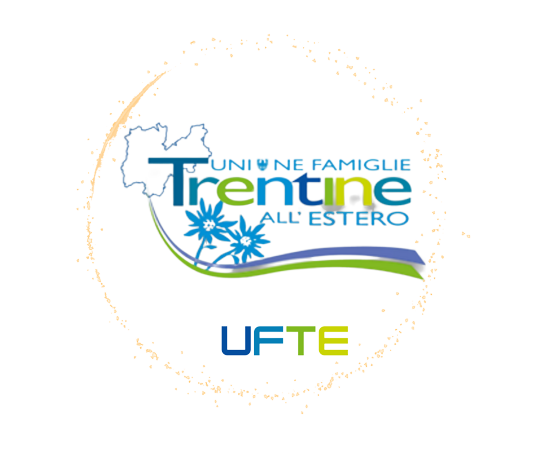
IMMIGRATION TO AUSTRALIA
By Emma Buis

Lino Albino Gasperotti
My Nonno, Lino Albino Gasperotti, was born on the 24th March 1921 in Pomarolo, Trentino, to Antonio Gasperotti and Giselle Nardoni. He was the eldest of 5 sons. He spent his teenage years growing up through the peak of the war, in which he was enlisted in the Italian army. So too were some of his younger brothers. Our family was fortunate that we lost no loved ones during this dark mark in history. After the war, Nonno worked as a farmer in the region around Rovereto.

My Nonna, Agnese Fontana, was born on the 14th June 1923 in Fontana di Vallarsa, Trentino, to Vigilio Fontana and Giulia Cavedon. She was one of 9 children. In her teenage years, my Nonna found work at the local hospital in Rovereto, where she worked as a nurse. This is where she first met my Nonno. He had broken his arm after falling off a bicycle, and was in hospital for surgery.
After courting for many years, which included working in Switzerland, they wed on the 4th December 1948, in the church of St Anna di Vallarsa. The church is still in working order today, and is the central bell tower for the Vallarsa Valley. My eldest brother and I have been fortunate enough to visit this church and see the signatures from their wedding day, over 60 years ago.
It was after their wedding and the birth of their first child, Carmen Irma, that they received an offer from Nonna’s Uncle in Australia. Remigio Cavedon had migrated to Australia in 1924, close to 25 years before, and had established a life their – owning his own tobacco farm. He told Nonna and Nonno of the opportunities that await in Australia and he would sponsor their journey across the ocean. Life was difficult in Italy at this time. After the war, there wasn’t much work. As there was limited prospects in Trentino, they accepted. Nonna already had an older sister which had moved to Australia 2 years before.



The ship left from Genoa on the 25 April 1952 and arrived in Melbourne on the 21 May 1952. They moved to her uncles farm in North – East Victoria and lived there for two years, until they were able to afford their own farming land. Nonna and Nonno went on to have four children. They grew accustomed to Australian life and even adopted a native pet – a Kangaroo they called ‘Skippy’.
The Alpine Shire, specifically around the small town of Myrtleford, was home to a lot of Trentini which migrated in between World War 1 and 2. It was an ideal location for people of Trentino as is was home to quality farming land, and the alpine ranges. The mountains and rivers made it feel like a little bit of home. It was common to hear more Italian and dialetto spoken in the streets than English in the 1950’s – 1980’s.
The trentino culture was strong in the region, that a Club di Trentino was formed. This encouraged song, dance and food of Trentino to be shared and carried on in Australia. I remember when I was little going to dances and seeing my Nonno participate.

In 2013, my brother was accepted into the Trentini Youth Exchange Programme. It was this that developed my interest. In 2017, I applied for the 3 week exchange programme. I was incredibly fortunate to be placed with a young couple in Pomarolo, the birthplace of my Nonno. On my free days, I spent time with my blood family that I have remaining in Pomarolo. Two of my Nonno’s brothers are still alive, so I spent days practicing my Italian with Zio Remo and practicing my dialetto with Zio Francesco – in the house where my Great Grandparents lived. I remember Zio Remo visiting in Australia when I was very young, just before I lost my Nonno to cancer. It was a very emotional experience getting to spend so much time with a grandfather figure, but it was incredible hearing stories of their youth. Something I never had the opportunity to do with Nonno as he passed away when I was 5 years old.


Whilst on the exchange, I met twenty other young people from around the world, all with heritage from Trentino. It was a special experience to visit different locations around Trentino which have cultural meaning to the Province. We visited many different Valleys – Val Di Judicarie, Val Di None, Vallarsa, Va Di Sole and Brentonico. One of my favourite excursions was Vigolo Vattaro. We participated in a festival where we carried Trentino flags from all different countries, but we also were able to speak with local veterans. Some shared stories with me of their youth, growing up through the war. I was fascinated by one gentleman who wore his Alpini hat – the green hats given to the Trentini Soldiers who fought in World War 2. I remember my Nonno having one in Australia.

After the exchange, I spent time in Vallarsa to visit my Nonna’s family. My Nonna’s youngest sister – Zia Rosina, still lives in Staineri. Zia has lived her whole life in the Valley of Vallarsa.
My cousin, Paolo, took me on a lot of hikes into the mountains. He told me stories of my great uncle who use to farm up in the Dolomites. One day, he took me up to a refugio and made me pose to take a photo. It wasn’t until afterwards he told me why – my Nonno had been in this valley working 60 years before and Paolo and let me recreate the photo.


We have been fortunate enough to re-connect with our Italian family ever since my brother visited Italy 10 years before. We have now visited many times, and they have come to visit in Australia. I gave Paolo a sticker for his car – ‘I love Harrietville’ – which is the town where I was born. He gave me a sticker for my car ‘I love Vallarsa’. I think of Vallarsa everyday.



